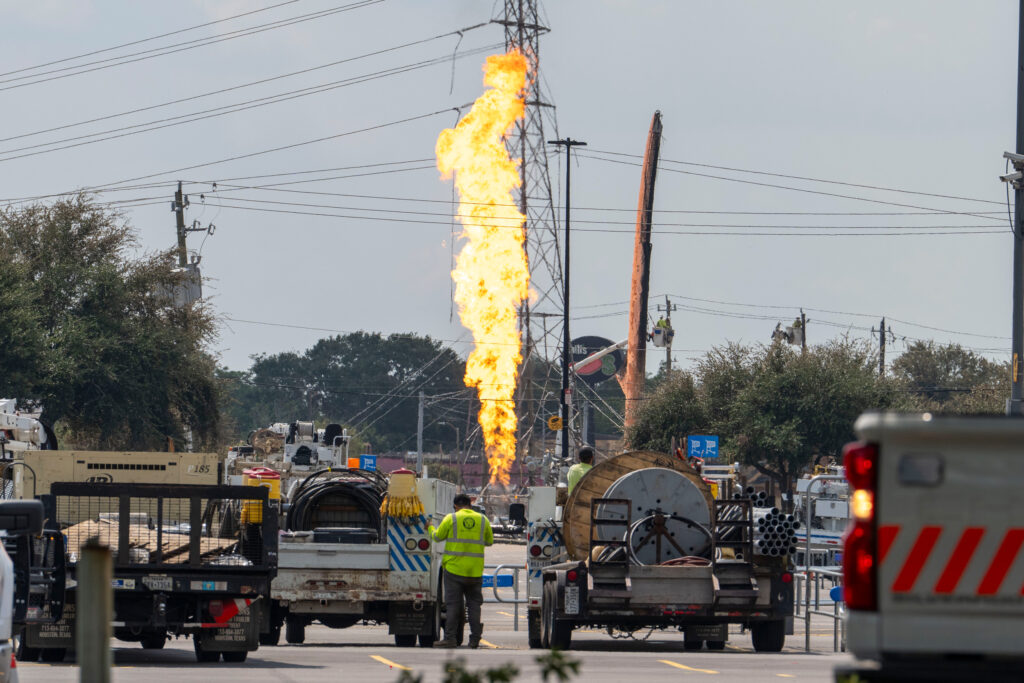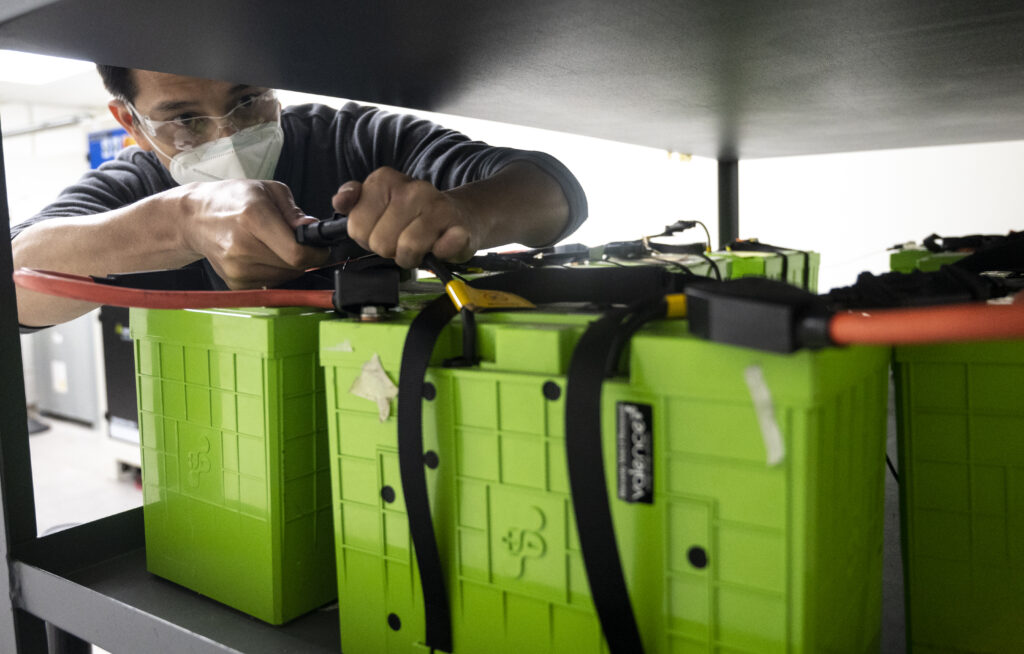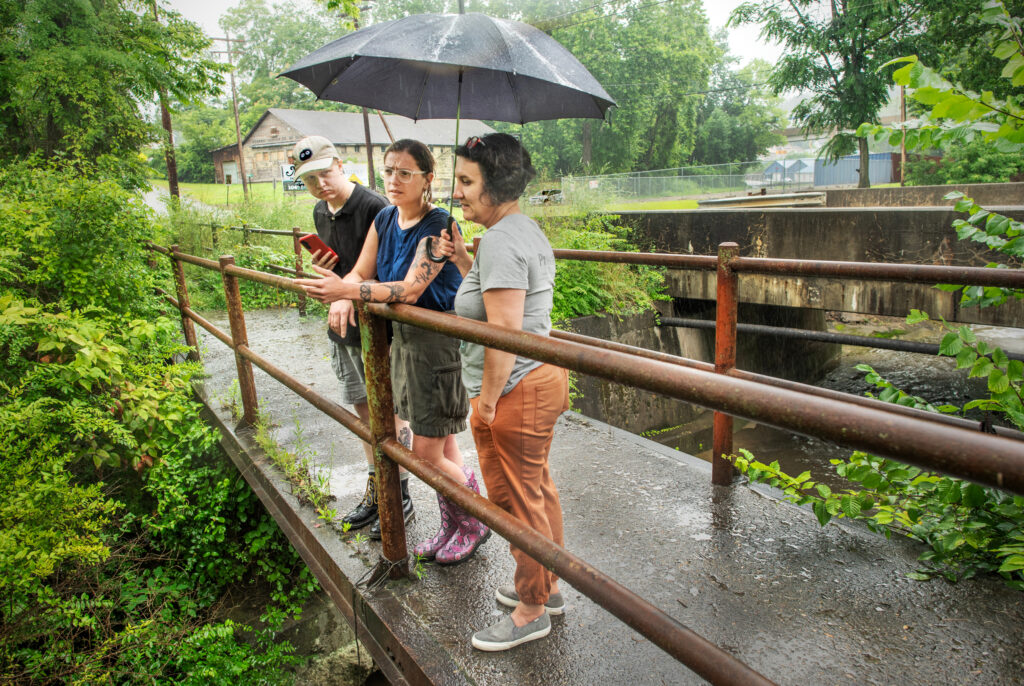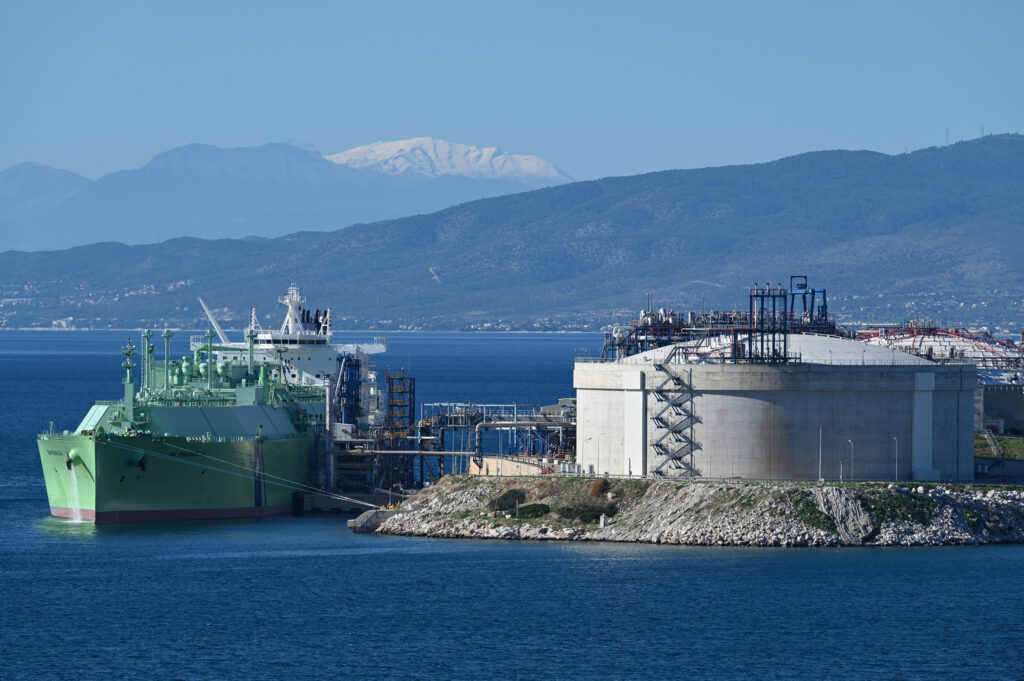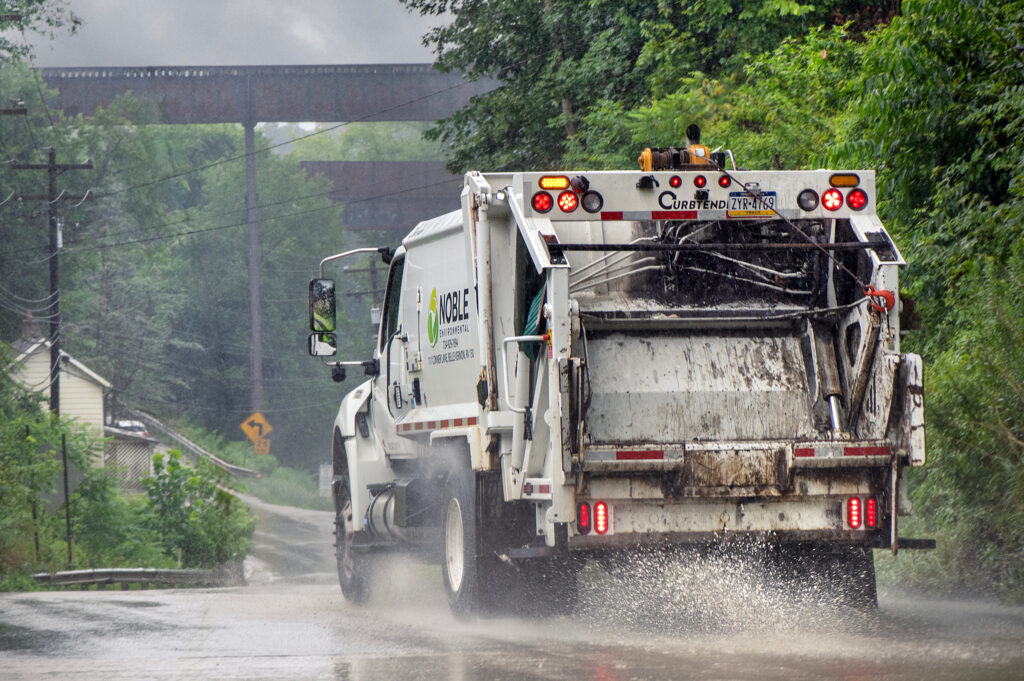The Pattison Co. quarry in Garnavillo, Iowa, pumps nearly 1 billion gallons of groundwater each year, pulling it from the bedrock in order to mine limestone, sandstone and silica sand used in oil fracking.
Now, the quarry is seeking permission from the Iowa Department of Natural Resources to quadruple its water withdrawal.
If the permit for removing nearly 4 billion gallons a year is approved, the Garnavillo site would be one of the 10 most water-intensive quarries in the state—pumping as much groundwater as it would take to serve roughly 100,000 people.
Residents of surrounding Clayton County fear the consequences the permit would have for their own water sources and say that the Iowa Department of Natural Resources (DNR) has failed to assess the potential impacts of the dramatic increase in water use on local groundwater levels. Iowa environmental groups, meanwhile, say the DNR is misapplying state code in its evaluation of the permit.
The family-owned Pattison quarry sits atop the sprawling Cambrian-Ordovician aquifer system, known as the “Jordan aquifer,” a deep-bedrock groundwater reserve that lies beneath nearly all of Iowa and parts of six neighboring states.
In 2024, Pattison submitted a request to the DNR to increase its water withdrawal from multiple sources on or adjacent to the quarry, upping its use to 3.7 billion gallons a year, 1.5 billion gallons of which would come from two Jordan aquifer wells.
The additional withdrawal will allow Pattison to quarry rock below the current water table and continue to support 175 employees in the area, Kyle Pattison, the company’s owner, told Inside Climate News. The quarry stores pumped water in basins on site and releases any overflow into a neighboring creek that runs into the nearby Mississippi River, Pattison said.
This quarry process, called “dewatering,” in other words, isn’t the same as water consumption. But it can affect groundwater availability and create opportunities for contamination, said Keith Schilling, state geologist and director of the Iowa Geological Survey. Water stored in basins aboveground does eventually seep back into the water table, but not necessarily at the rate it’s removed or without absorbing industrial pollutants, said Schilling.

A summary of the company’s permit request published in March by the DNR indicated the agency was poised to grant Pattison the additional water.
“No substantial adverse effect upon other water users is foreseen at this time,” the summary read. “The requested amount of water use is also justified by law, barring compelling circumstances that mitigate to the contrary.”
Later in March, the DNR publicly announced its intent to approve the permit modification, publishing a summary in a newspaper as required by state rules. The agency opted to use the Calmar Courier, which is neither in Clayton County nor the nearest paper to Garnavillo and the Pattison quarry. (That was a mistake, the agency later said.)
Kelley Glawe, who lives in neighboring Guttenberg, first learned about Pattison’s request for more water when someone shared the Calmar Courier announcement to a private Facebook page for Guttenberg residents.
The announcement prompted Glawe and many others to write to Chad Fields, the DNR water engineer responsible for overseeing water allocation permits. Glawe said she fears that Pattison’s water use will cause contamination issues or affect water levels in private wells.
“It’s not unheard of,” Fields acknowledged in an interview with ICN. Quarry expansion has been the most common cause of well interference during his time at the agency, he said.
This story is funded by readers like you.
Our nonprofit newsroom provides award-winning climate coverage free of charge and advertising. We rely on donations from readers like you to keep going. Please donate now to support our work.
Donate Now
The DNR permit summary says the agency doesn’t anticipate well interference as the quarry increases its withdrawals but acknowledges the possibility: “Dewatering of the Jordan aquifer for mining purposes in the area will establish a regional cone of depression in the Jordan aquifer around the Pattison Sand Company’s mining footprint.” A “cone of depression” is an area surrounding a well where pumping has lowered groundwater levels.
State law requires compensation to impacted well owners, Fields noted. But few residents are satisfied with the idea of compensation instead of prevention.
“The DNR, they’ll only investigate when you want them to come and take a test or when you have concerns,” said Glawe. “They’re not really proactive in knowing what’s going on.”
At a public hearing held by the DNR on April 22 in Clayton County, more than 75 residents spoke in opposition to the increased water allowance. That’s the equivalent of nearly 10 percent of Garnavillo’s population.


To Glawe, it feels as though the DNR is simply ignoring the likely consequences of Pattison’s water use for residents. “They can’t, in any logical way, say that nothing’s going to affect anything,” she said.
The company maintains that its increased water use will not harm nearby residents. “We have spoken to DNR in detail of what we are doing, and why we are confident we have not had any impact on anyone, and why this will continue,” Kyle Pattison wrote in an email to ICN.
Chad Schroyer is the superintendent of public works for Garnavillo, which sits a few miles from the Wisconsin state line and the Mississippi River demarcating it. In May, he asked the Garnavillo mayor and City Council for permission to send a letter to the DNR opposing an “excess amount of water being pumped from the Jordan aquifer.” He received unanimous approval.
The 3.7 billion gallons sought by Pattison contrasts starkly with Garnavillo’s usage, said Schroyer. “We run anywhere from 17 to 19 million gallons annually. That’s pennies on the dollar for what they’re trying to pump out.”
While Iowa sets limitations on wells drawing from the Jordan aquifer, the DNR says the Pattison wells are not required to comply because they tap a part of the aquifer partially replenished by additional water sources like rainfall and the Mississippi River. Such regions of the aquifer that are exposed to other water sources, rather than isolated and finite underground reservoirs, are classified as “unconfined.”
DNR’s summary of the Pattison permit describes that part of the aquifer as “unconfined” and “at the land surface.”
“We haven’t done a complete analysis of what percentage comes from what source,” said Fields. “But just without doing a full hydrologic geologic investigation, these wells are a few hundred feet away from the Mississippi River. The water that’s going to be withdrawn from these wells is going to be a large chunk of Mississippi River water.”
Iowa has a cap of 2,000 gallons per minute for wells that draw from the Jordan aquifer. The draft permit for Pattison allows for 2,800 gallons per minute.
In a letter to Fields, the Iowa Environmental Council challenged the DNR’s position that state regulations allow for that.
“The rule doesn’t exempt the unconfined areas of the Jordan aquifer,” said Michael Schmidt, the group’s general council. “It seems like it applies here, but DNR is not applying it.”
A complete analysis of the area’s groundwater is critical moving forward, said Schilling, the state geologist. “Is this a little bit of withdrawal relative to how much water is infiltrating in, or is it a lot? We need to know what those groundwater balances are before we know how much a new use will impact things.”
The DNR plans to conduct such a study, Fields said, but he could not say whether the research would take place before or after granting Pattison the modified permit. Residents are holding out hope for the proactive route.
It would be a rare change of tack for Iowa, Schilling said: “I think our water use approach in the state has typically been to use the water and then deal with the consequences later.”
About This Story
Perhaps you noticed: This story, like all the news we publish, is free to read. That’s because Inside Climate News is a 501c3 nonprofit organization. We do not charge a subscription fee, lock our news behind a paywall, or clutter our website with ads. We make our news on climate and the environment freely available to you and anyone who wants it.
That’s not all. We also share our news for free with scores of other media organizations around the country. Many of them can’t afford to do environmental journalism of their own. We’ve built bureaus from coast to coast to report local stories, collaborate with local newsrooms and co-publish articles so that this vital work is shared as widely as possible.
Two of us launched ICN in 2007. Six years later we earned a Pulitzer Prize for National Reporting, and now we run the oldest and largest dedicated climate newsroom in the nation. We tell the story in all its complexity. We hold polluters accountable. We expose environmental injustice. We debunk misinformation. We scrutinize solutions and inspire action.
Donations from readers like you fund every aspect of what we do. If you don’t already, will you support our ongoing work, our reporting on the biggest crisis facing our planet, and help us reach even more readers in more places?
Please take a moment to make a tax-deductible donation. Every one of them makes a difference.
Thank you,








